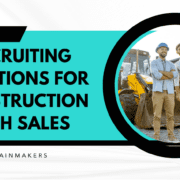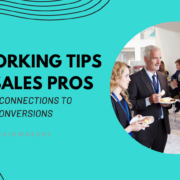SPIN Selling: A Legendary Sales Methodology To Guide Your Discovery Calls
What Is SPIN Selling?
Spin selling guides the sales conversation once a prospect is engaged. It helps the sales professional understand what questions they should be asking to conduct a compelling discovery call. First, Let’s’ take a closer look at each letter in this acronym. We recently did a breakdown of BANT, so check that out, too, if you’re curious.
S – Situation
S stands for Situation, and these questions help you better understand what’s going on in your buyer’s world. Through this line of questioning, you should be able to uncover what’s happened with the prospect historically and what led them to begin a conversation with you. It would help if, in addition, you were trying to identify the key facts that help you effectively understand the background of your buyer and their organization.
Here are a few examples of Situation questions you can ask on your next discovery call:
- What are you currently doing today, and how does that compare to what you were doing in the past?
- What’s leading you to explore a new solution now?
- What tools are you using, and what does that process look like today?
Once you clearly understand the facts and where your customer stands, you can move on to the next part of the acronym, which is the P.

P – Problem
P stands for Problem questions, which should be used to have your customer divulge their pains to you. You should aim to learn what’s causing them trouble and push them to find a solution.
Much like the Situation questions, you are simply collecting facts. You want to get a solid understanding of what is bothering them and what it is they are trying to fix. After all, the job of a great salesman is to be a helpful consultant. How can you consult on an issue if you don’t know their problem?
Here are a few problem questions you can look at as examples of what you should be asking:
- How much time are you spending doing this process manually?
- Do you ever have instances where something falls through the cracks?
- Is this issue hurting your business?
I – Implication
Now what comes next is I, which stands for Implication questions, and these should be used to highlight a cause and effect relationship based on your understanding of the buyer’s current Situation.
Truly skillful salespeople set themselves apart through their masterful use of these questions. By asking the right questions, the sales rep can bring the prospect to realize the severity and importance of the problem without explicitly telling the prospect. When done effectively, the customer will essentially come to sell themselves on the idea that something needs to be done and FAST.
To help you better understand what implications are and how you can use them, check out a few of the examples below:
- If you don’t do anything to change your current process, what do you foresee happening to your business moving forward?
- If you don’t address these inefficiencies, how much would that cost your business every year?
- What’s the opportunity cost of not bringing in a new solution and addressing this issue?
If you’re good at utilizing this framework, you can even piggyback off your problem questions to lead into the implications.

Let’s take some of our examples from earlier to help illustrate what I mean:
- How much time are you spending doing this process manually?
- If you continue to go about this in the same fashion, would that negatively impact your other responsibilities?
- Do you have instances where something falls through the cracks?
- What was the business impact in those kinds of situations?
- Is this issue hurting your business?
- If you don’t do something about it now, what do you think the annual cost to your business will be?
N – Need Payoff Questions
N stands for Need-payoff questions. This means you should use these questions to highlight what the customer stands to gain by choosing to move forward with your product or service.
What are the benefits of working with you, and what do they stand to gain by doing so?
Below are a few examples of need-payoff questions to help you better understand what they are and how you can use them in your own sales processes:
- By automating processes that you’re doing manually today, how much time do you think you’ll be able to save?
- What are some ramifications you can foresee from having more freed-up time?
- Understandably, you’d save a lot of money by implementing a solution to address this issue today. But what would those savings mean for your business?
- Using a tailor-made system built just for your business will likely see a massive jump in efficiency and, ultimately, your business’s reputation, which is something you can advertise. Do you find value in having something like this as a competitive differentiator?

Conclusion: SPIN Selling
Granted, the examples I’ve provided may not be the perfect match for every situation and every product or service. Still, hopefully, it provides you with a basic understanding of what this framework is and how to use it. Using this simply as a model to guide your future sales processes, hopefully, you’ll be able to conduct highly effective discovery calls that will ultimately lead to more significant sales.
Additionally, these are essentially just the fundamentals because we are condensing the book into a short blog post; if you want to dive deeper and expand your knowledge on how to use the SPIN selling technique most effectively,I’dd recommend picking up the book and giving it a read yourself.There’ss much more detailed information in there around the effective use of this framework that wearen’tt able to cover here.
Get high-paying Account Executive sales jobs at Rainmakers! Start browsing jobs now!










